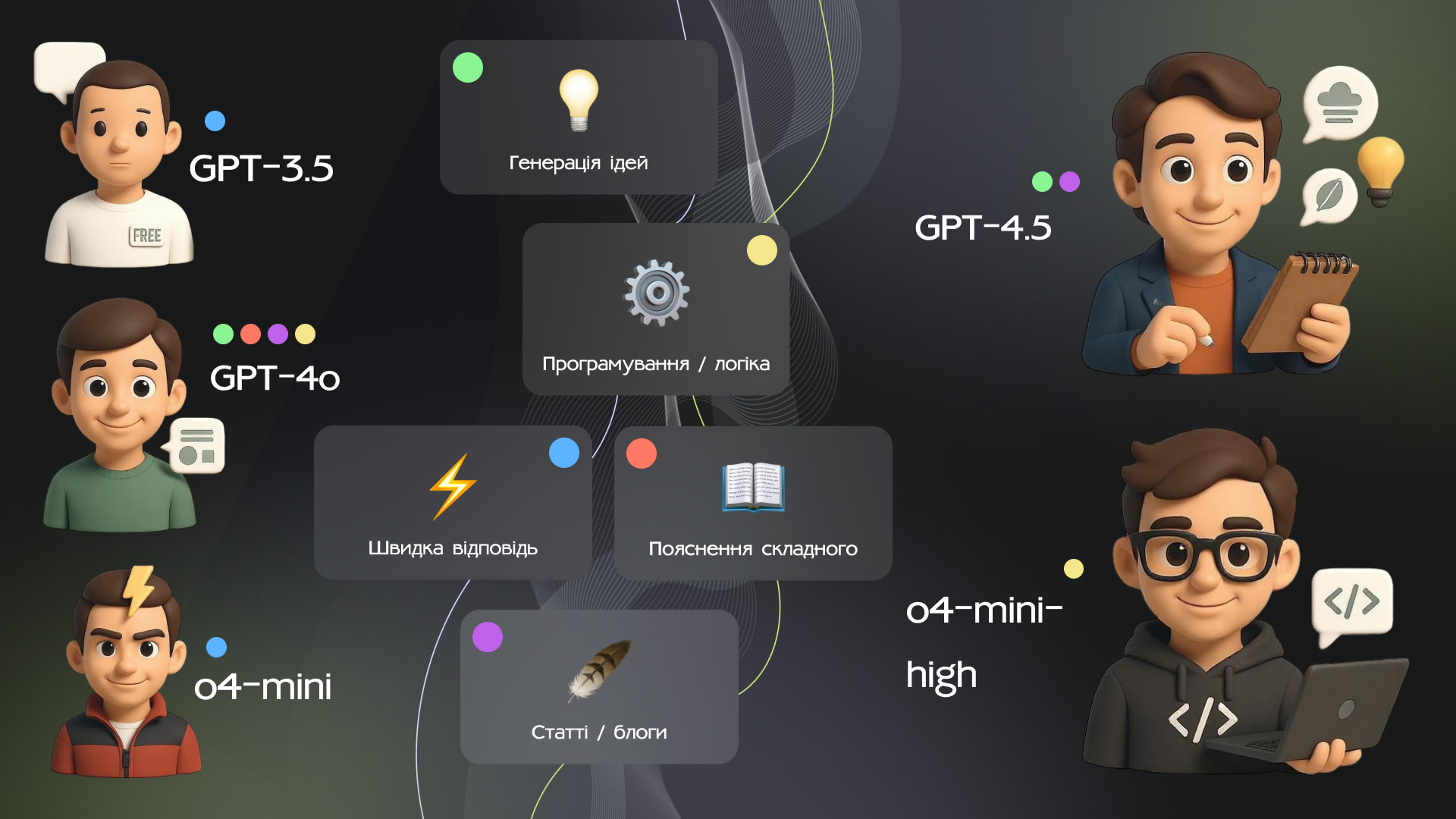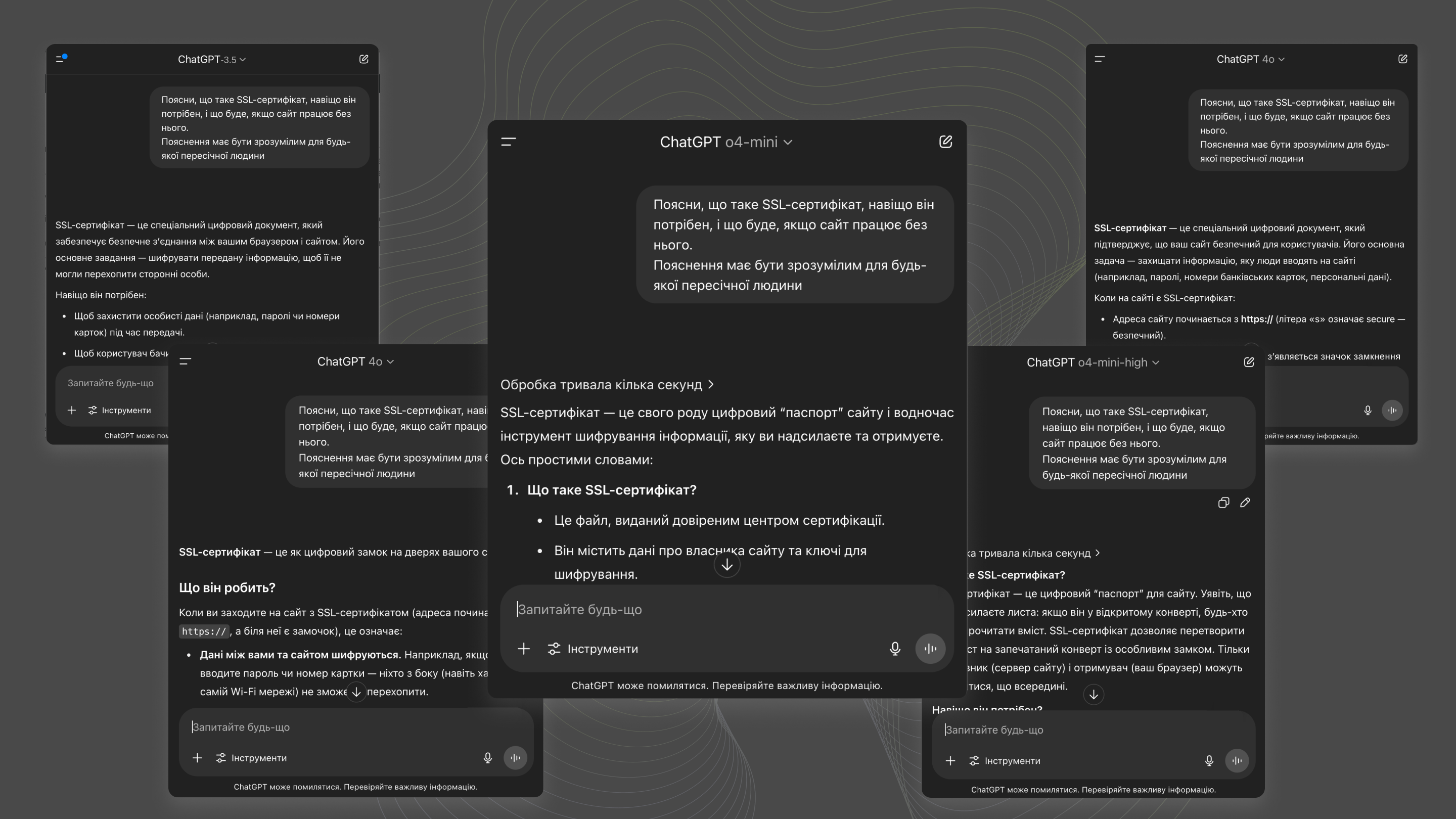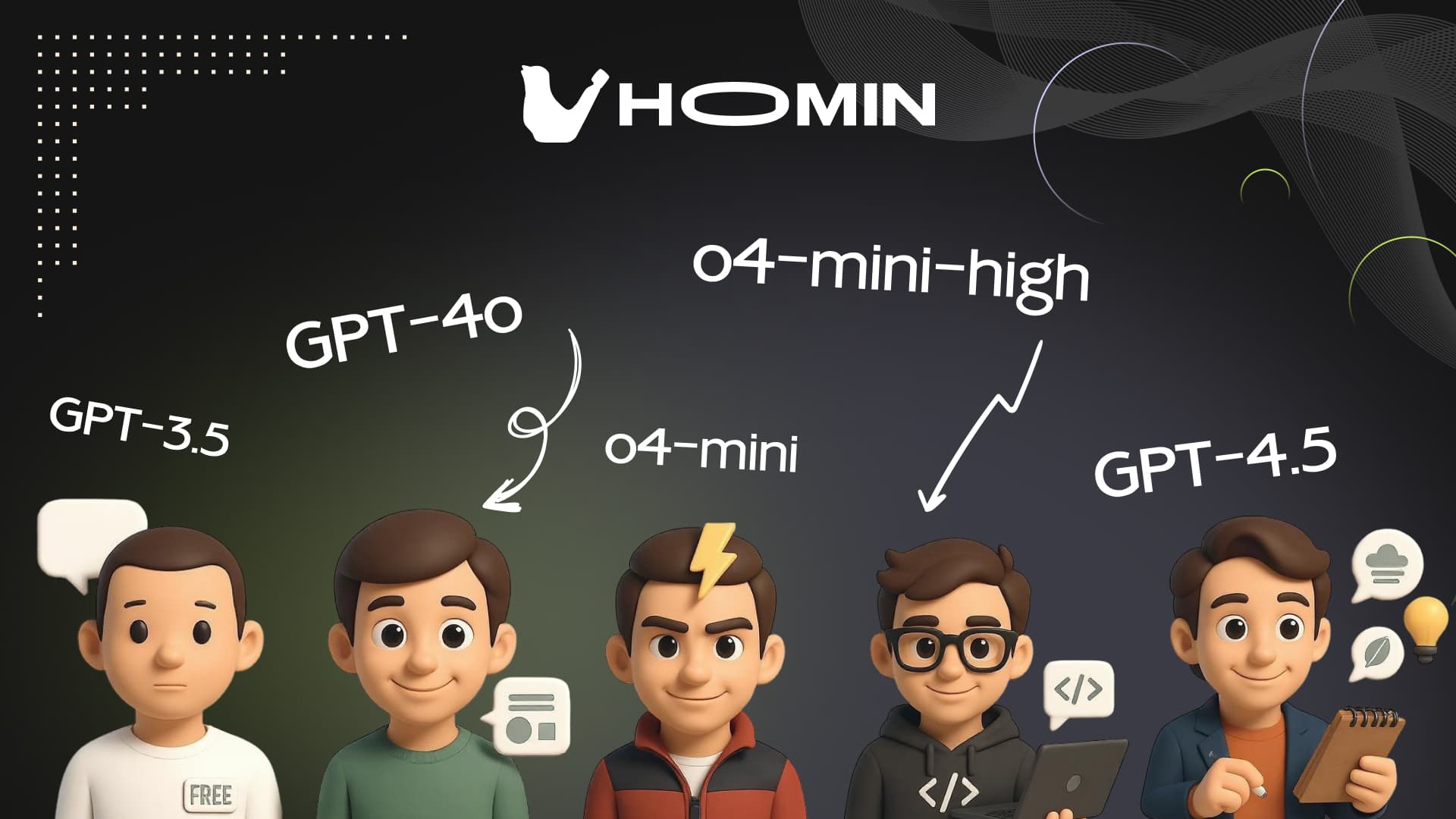Which ChatGPT model should you choose?
When you open a chat with AI, it might seem straightforward: you type and wait for a response. But even before that, it's important to make a choice that affects how the AI responds.
ChatGPT has several models available: GPT-4o, o4-mini, GPT-4.5... Don't panic — these aren't technical textbook terms but rather like personality types. If these were people, one would speak quickly and directly, another calmly and in detail.
We've tested them all — here's what we've noticed.
What exactly is a "model"?
It's not a feature or an option. The model is the AI you're talking to. The selected model determines everything: language style, response speed, depth, whether examples are included, or if it's straight to the point. Some are better with code. Others explain like teachers. Some react instantly but don’t delve into details. Others write as if drafting a blog. An important point: ChatGPT is the name of the service, not the model. You choose the model (GPT-4o, o4-mini, etc.) within this chat.
Overview of available models
ChatGPT offers several models. All can respond to queries but do so differently. Below are brief descriptions of each.
🧱 GPT-3.5 A basic model that responds quickly and simply. Doesn’t handle images, files, or voice — only text. Default model on the free plan. Strengths: speed, minimal resource usage, basic explanations. When to use: simple textual explanations without complex logic or when GPT-4 is temporarily unavailable.
🟢 GPT-4o GPT-4o is a versatile model supporting text, images, voice, and video (omni). It can even be available on the free plan if you haven't reached usage limits. Strengths: logic, depth, examples, gentle style. When to use: when detailed explanations or thoughtful responses are needed.
⚡ o4-mini Minimalistic and very fast. Provides quick responses without extras. Strengths: speed, conciseness, simplicity. When to use: brief explanations of basic topics or immediate responses.
🧑💻 o4-mini-high Closer to a technical style. Clearly explains code, structures, and logic. Strengths: terminological precision, developer-oriented examples. When to use: technical queries, coding tasks, IT contexts.
🧠 GPT-4.5 GPT-4.5 is a test model used by OpenAI during A/B testing. It’s not official but can be visible to some ChatGPT Plus users with beta access. It resembles a person writing for publication, articulating ideas thoroughly and coherently. Strengths: structure, clarity, polished style. When to use: articles, blog explanations, idea generation.

One query — different models
To see practical differences, we tested them on a single query: Explain what an SSL certificate is, why it's needed, and what happens if a website doesn't use one. The explanation should be clear to any ordinary person. Here's a brief comparison of responses:
🧱 GPT-3.5 Brief and direct, without examples or metaphors. One-paragraph answer, no subheadings. Tone: reserved, neutral. Form: continuous text, 1–3 sentences, no structure. Impression: good for quick essentials, no details.
🟢 GPT-4o Uses a simple metaphor: SSL as a "digital lock." Structured response with subheadings, includes examples, clear and gentle language. Tone: friendly teacher. Form: logical sections—what, why, consequences. Impression: most understandable for general audiences.
⚡ o4-mini More like concise technical notes. Points: what it is, why needed, consequences. No extras, no examples. Tone: instructional. Form: short fact list. Impression: quickly get the essence without details.
🧑💻 o4-mini-high Explains through analogy of a letter in an envelope — technical yet accessible. Slightly deeper than o4-mini, focusing on technical essence. Tone: tech person explaining simply. Form: structured, with an example. Impression: good for slightly more details without overload.
🧠 GPT-4.5 Structured as a reference article: balanced language, detailed (even mentions SEO). Tone: technical blog author. Form: coherent narrative with conclusions. Impression: good readability, less conversational.
Model | Explanation Style | Tone | Format | When to Use |
GPT-3.5 | Concise explanations | Neutral | 1–2 sentences, no examples | Simple textual queries on free plan |
GPT-4o | Metaphors, examples | Calm, human-like | Structured, with headings | Explaining complex topics to wide audience |
o4-mini | Facts in bullet points | Neutral | Lists, no elaboration | Briefly explaining the essence |
o4-mini-high | Analogies + technical accuracy | Technical, reserved | Structured, with examples | Technical specialist explanations |
GPT-4.5 | Consistent narrative, detailed | Editorial | Smooth, blog-style text | Writing articles or informative posts |

Recommendations by scenario
Scenario | Recommended Model |
You need to explain a complex topic to someone without a technical background | GPT-4o |
You want to quickly grasp the essence — short and without details | o4-mini |
The query involves programming or technical structure | o4-mini-high |
You need to write an article, prepare a post, or explain something like an editor | GPT-4.5 |
You're unsure which model to choose and want a "universal performer" | GPT-4o |
These aren't strict rules. Sometimes the quickest model provides the best answer. But as guidance, it works well.
Conclusions
Models in ChatGPT are like conversation styles. One speaks calmly and simply, another like an engineer, another like an inspired copywriter. AI doesn't read minds (yet 🙂), so everything depends on your task and its formulation. The clearer your question, the better the response. Sometimes even the smallest model gives exactly what you need. If you're on the free plan, usually you have GPT-3.5. But occasionally OpenAI provides temporary GPT-4o access — for testing or when the system is lightly loaded. It’s not guaranteed, but it happens. So even without a subscription, you can occasionally experience responses from the newest model.

